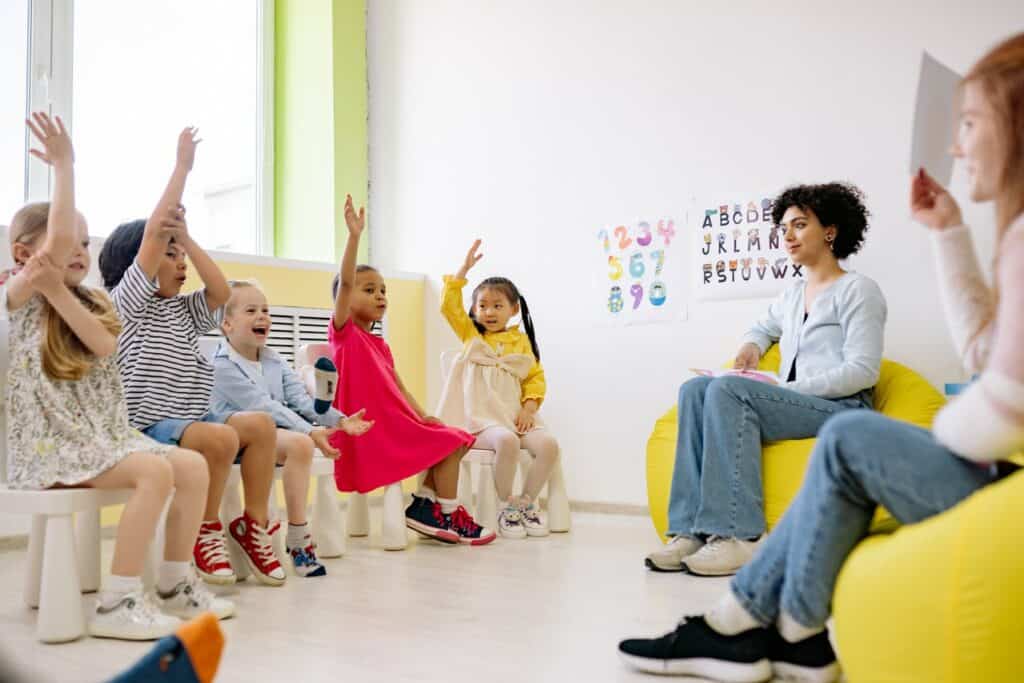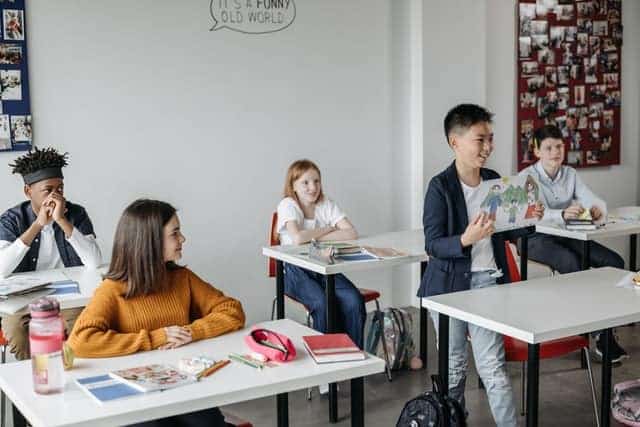Educators might assume that their classrooms feel safe to all their students. However, creating an inclusive classroom requires active work and a plan.
Creating An Inclusive Classroom
The process of creating an inclusive classroom may come intuitively to some educators, while some features might be surprising. Actively creating an inclusive classroom requires educators and students alike to learn more about what’s going on in the lives of other people in order to more effectively create an inviting and inclusive classroom environment for children of all backgrounds.
To start, here are a few inclusive classroom examples to get educators thinking about nurturing a more inclusive classroom setting.
Inclusive Classroom Examples
Creating an inclusive classroom includes many different aspects of education. Active pursuit of fair-minded and empathy-driven educational practices requires a holistic approach to education and development. While in essence, inclusive education is as simple as being fair to everyone, like so many simple ideas it isn’t easy to implement.
So what does an inclusive classroom look like? According to Harvard University, educators have to, “Learn high-leverage Instructional Moves to make your classroom discussions more inclusive, student-centered, and purposeful.” (Harvard)
Here are some inclusive classroom examples to guide educators in their educational strategy (Harvard):
- Active learning: It might sound only obliquely related, but the pursuit of active learning strategies and incorporating active learning techniques into curricula will promote an inclusive learning environment. This is because active learning promotes complex thought processes and active attempts to understand other perspectives and ways of thinking.
- Growth mindset: The inability to accept alternative lifestyles tends to stem from a habit of seeing the world as restrictive and very much set in its ways. Promoting a growth mindset in the classroom enables students to see value in attempting to understand alternative perspectives.
- Get to know your students: Not every fix will work the same for every student. An educator can create a curriculum designed to promote inclusiveness, and with the very best of intentions, they might neglect the tools necessary for some group that they themselves might never have encountered, for instance. It’s essential for educators to get to know their students and make adjustments to their inclusive classroom activities.
- Build opportunities for work outside the classroom: The essential purpose of a classroom is to prepare students to succeed in life. However, there are other opportunities to grow ideas. Seek opportunities outside of the classroom to give students the chance to see how ideas work in the wild.
- Group expectations and guidelines: In order to make the environment safe for all students, it’s important to communicate to all students why it’s important to create an inclusive learning environment for everyone.
Educators may have to ask, “What does an inclusive classroom look like?” The answer will vary from one classroom to the next. In principle, however, the characteristics of an inclusive classroom will include the opportunities for students to learn empathy and the tools for understanding different perspectives.
Inclusive Classroom Activities

An inclusive classroom often looks like a thoughtful classroom. The characteristics of an inclusive classroom create a sense that all perspectives, and therefore all students, are embraced and valued. There has to be a sense of belonging achieved through an active pursuit of learning the values and perspectives of all students.
In the pursuit of this strategy of active learning to create an inclusive learning environment, here are a few activities to get educators started (LSA):
Core Values Exercise
Students may have never expressed their values before. While they might not need to define their values to the precision that some adults decide to define theirs, creating a sense of inclusiveness in the classroom might be easier if students have the opportunity to express what they value. This can help them recognize that some people share their values, and some people don’t. The goals of this activity include:
- Helping students determine their own values
- Helping students appreciate diversity in values
- Prompt discussion among students about values
How to do it:
- Moderated in-class discussion
Dialogue Blocker Exercise
Classrooms are microcosms of the greater community, and community runs on effective communication. Sometimes listening and empathically responding during conversations is excluded. This exercise is meant to create a scenario where students can learn to recognize dialogue blockers, or communication strategies getting in the way of effective communication. In recognizing them, students are better able to avoid them. The goals of this activity include:
- Helping students recognize dialogue blockers
- Encourage students toward more introspection during conversation
How to do it:
- Find an example from a book or show where a conversation was ineffective and left its participants dissatisfied with the results.
- Through moderated discussion, lead students through the poor communication displayed and talk about possible improvements.
Name Story Exercise

This inclusive classroom activity is designed to help students see each other and appreciate each other. At the same time, it gives every student the opportunity to feel like they have something inherently valuable about themselves that they can share with the class. The goals of this activity include:
- Building community
- Promoting a sense of diversity in the classroom
How to do it:
- Give every student a chance to tell everyone their first, middle, and last names.
- At the same time, every student has an opportunity to tell any story about their name that they know or like.
In addition, Soul Shoppe provides an online curriculum that can help promote inclusiveness and understanding within the classroom. Respect Differences, Tools of the Heart, and Allies Against Racism are all programs that help children overcome isolation and strengthen relationships. Find out more about Soul Shoppe’s SEL programs from elementary schools here.
Inclusive Classrooms in a Diverse World
Since every classroom and every set of students presents different needs and challenges, it may be necessary to design exercises more specific to a given classroom or set of students. Everyone comes from different backgrounds, and in order to prepare students for success in life, educators need to create inclusive classrooms to help students feel safe and connected.
Soul Shoppe provides social emotional learning programs and can help you learn how to create a safe space in the classroom or at home. Soul Shoppe encourages empathy and emotional awareness in children. Click here to get into contact with us.
You May Also Like:
Conflict Resolution Activities for Kids


